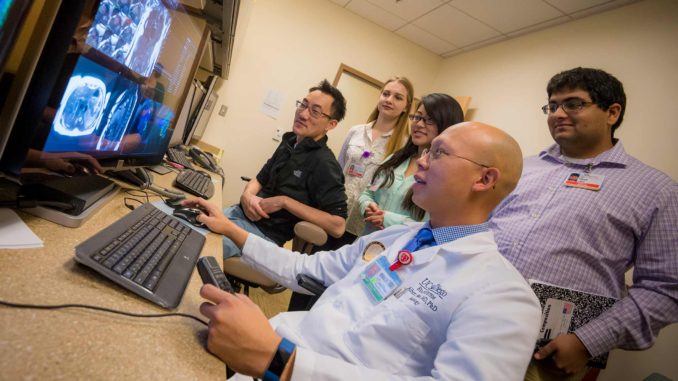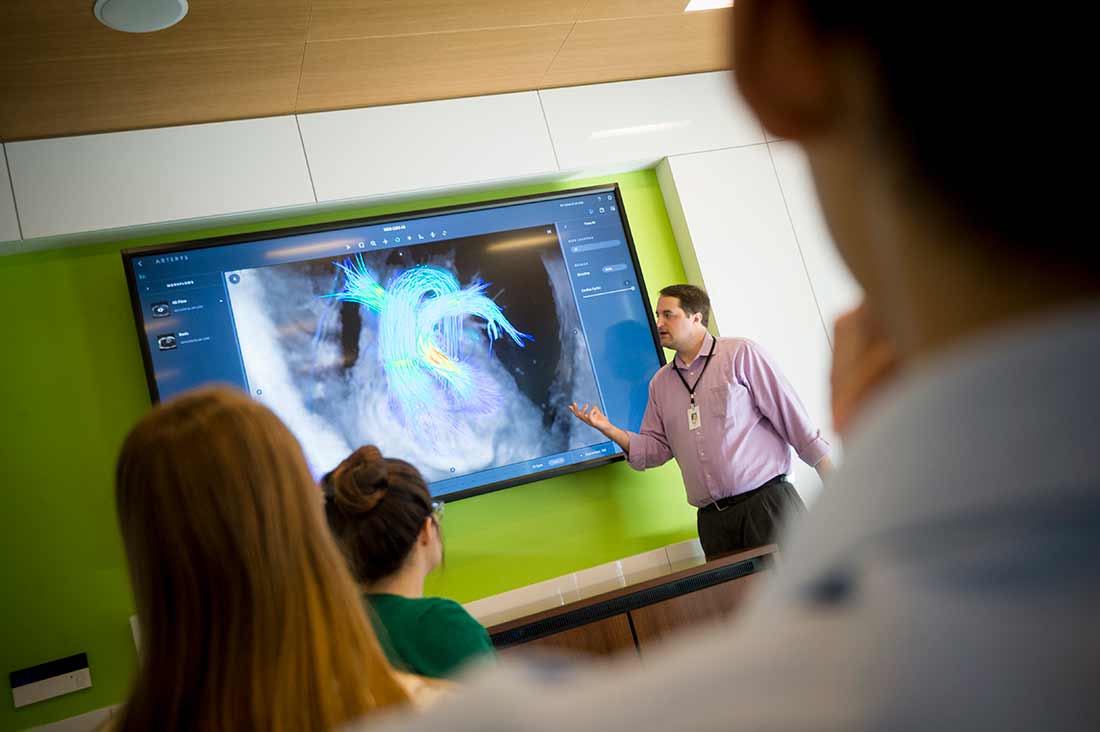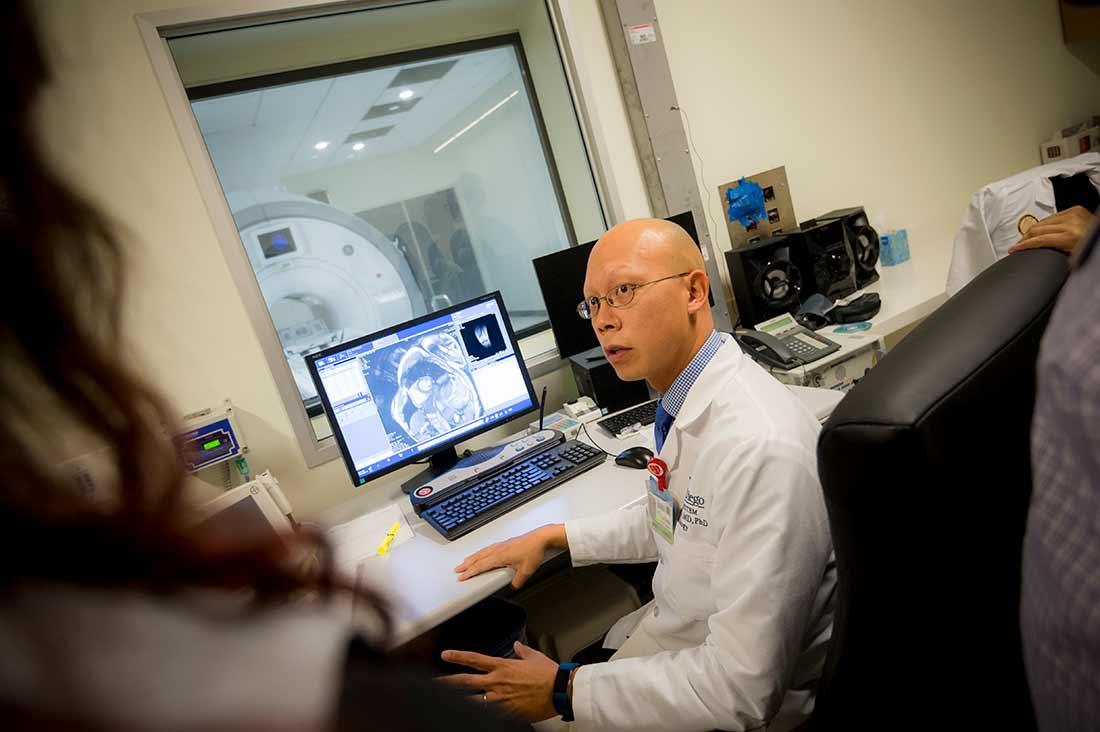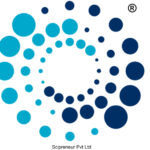
Creating Clinical Bioengineers
New class teaches undergrads to use engineering-based solutions to bridge gap between engineering and medicine
New class teaches undergrads to use engineering-based solutions to bridge gap between engineering and medicine
By: UCSD News
December 10, 2016
A group of UC San Diego bioengineering students huddle around a computer screen as colored images of
blood being pumped through a heart flash across the screen. The students are observing as a physician annotates an MRI of a patient’s heart and recommend treatment.
“It looks like there is fat here where there shouldn’t be,” says the physician as he pointed to a spot on the screen. “See how this part of the heart isn’t contracting?”
These students are part of a new UC San Diego clinical bioengineering class in which they observe physicians, identify problems in their clinical practices, and propose engineering-based solutions to bridge the gap between the bench and the bedside. In some cases, students have even obtained funding to turn their solutions into reality.

Bioengineering professor Adam Engler describes a novel imaging technique created by engineers to capture blood flow in the heart.
The students in question are working with Dr. Albert Hsiao. “I’m really glad to see that the bioengineering department is looking for ways to bridge engineering and medicine,” said Hsiao. “Imaging is fundamentally engineering-centric and plays an ever-increasing role in patient management.”
Hsiao is an assistant professor of radiology in the UC San Diego School of Medicine and associate director of cardiovascular imaging for the Center for Translational Imaging and Precision Medicine. He earned his bioengineering M.S. and Ph.D. degrees at the UC San Diego Jacobs School of Engineering and his M.D. as part of the Medical Scientist Training Program (MSTP) at UC San Diego.
After becoming a physician, he was troubled at how labor-intensive it was to perform MRI scans for patients with heart defects. So, he came up with a new way to use an MRI to image the heart, and wrote new software to handle the data for clinical diagnosis. Students in the class have been introduced to this software and the imaging technique that he developed, known as 4D Flow. This is just one example of the kinds of problems engineers can now solve for medical doctors, and it makes Hsiao an ideal mentor for the class.
“It was worth four years in bioengineering for this class,” said Jacobs School of Engineering undergraduate Rinoka Sato, who is aiming for an M.D. “It’s inspiring to talk to real physicians and think about what I can do to translate technology to the clinic.”
The new course is taught by bioengineering professor Adam Engler. He adapted adapted it from his alma mater, the University of Pennsylvania, where he was part of the first cohort of students taking a version of the class as an undergraduate two decades ago.
“Of nearly 100 bioengineering, biological engineering, or biomedical engineering programs in the U.S., UC San Diego is only the second institution to implement a class in which engineering students shadow renowned physicians as they treat patients, perform surgeries and diagnose disease,” said Engler. “This class goes a step further than hands-on and gives students the opportunity to identify and work on problems currently affecting physicians.”
During the course, the students complete three rotations in UC San Diego School of Medicine’s Department of Radiology, the cardiology division within the Department of Medicine (DOM), Department of Surgery (DOS), and Department of Orthopaedic Surgery as well as Rady Children’s Hospital. Engler hopes to expand the number of departments participating in the program as mentors.
The need for engineers to work with physicians is more important than ever. Efforts by the Galvanizing Engineering in Medicine and the Institute of Engineering in Medicine at UC San Diego speak to attempts to bridge the two disciplines. For fourth year bioengineering major Thien Doan, this class represented an important chance to interact directly with clinicians.
“I want to work in the medical device industry,” said Doan. “I’ve done several internships at medical device companies already, and without this experience I’d be blind to what actually goes on in the clinic.”
For his final project, Doan is applying Hsiao’s imaging technique to diagnose abnormalities in cerebrospinal fluid, which can result in headaches, difficulty with balance and other disabilities.
Moving from class to the clinic

Dr. Albert Hsaio explains how an MRI scanner works and describes potential areas for improvement by engineers.
In just two years, this clinical bioengineering class has shown remarkable success in terms of project and student outcomes. Of the projects proposed by students, four have received funding for further development via UC San Diego’s NSF-sponsored I-Corps program. One team redesigned surgical drains used under incisions made to remove tumors, while another team came up with a way for physicians to use fewer stents when treating coronary lesions.
“Having students develop an idea and then receive funding to create prototypes demonstrates how successful our students are despite the challenges that medicine presents,” Engler said.
The students who have taken the class have gone on to Ph.D. programs, medical school, M.D./Ph.D. programs and careers in the medical device industry.







Leave a Reply